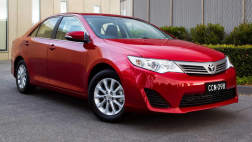Modern car design and our taste for SUVs and utes are making reversing cameras and sensors an essential safety feature.
In the US, moves are afoot to make reversing cameras a legal requirement on every new vehicle sold there.
Australia won't be far behind and could even jump ahead if the road safety zealots in Victoria - who force-fed electronic stability control into our cars ahead of the legal timetable - get into gear.
But why can't we just go old school and turn our heads to make sure there is nothing behind before we select reverse gear?
After all, it worked for many, many generations.
If only it was that simple.
There are a couple of big reasons why parking sensors and reversing cameras are indispensable today, and they have nothing to do with laziness, or an ageing population that struggles with turning the head, or the awful deaths of toddlers in driveways.
Most importantly, outward vision in modern cars is much more limited than in old-timers.
Look at a 1960s car and you see an airy cabin with lots of glass and super-thin roof pillars.
These days, crash protection and a focus on airflow for fuel economy means we have deeper doors and much smaller windows, especially at the rear.
Australians are also buying a vast number of vehicles that sit high (with consequent blind spots), especially full-sized SUVs and dual-cab utes.
Only six of the current top 10 sellers are cars.
The Toyota HiLux ute heads the work-and-play push with no sign of a reversing camera on the list of standard equipment aside from the top-spec SR5.
Researching this week's story on reversing cameras, I was appalled by the number of top sellers that do not have a standard camera - think Mazda3, Corolla, i30 and Golf - yet Honda includes one as standard on the baby Jazz for just $14,990. The base Golf doesn't even get parking sensors.





.jpg)
.jpg)

.jpg)


.jpg)

.jpg)





.jpg)



.jpg)



